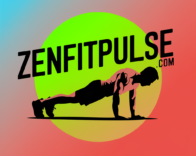
Starting a weight loss journey can be very intimidating. There is so much information out there, and unfortunately, a lot of it contradicts other sources — it can be incredibly confusing. The thing is, what works for one person might be terrible advice for the next and you just end up feeling like your stuck in a bad game of guess-who that will NEVER end.
But the thing is weight loss does not have to be complex or a punishment. This is all about finding YOUR balance and making the changes that work for YOU in your day to day schedule. In other words, it really gives a direction to your eating habits so you can stay on the path. It provides the framework for more while still living your life, eating all the foods.
What is A Weight Loss Diet Chart

A weight loss diet chart essentially is a personalized eating plan designed to help you adhere to an everyday healthy way of life and loose the kilos in stable approach. The trick is getting your body all the nutrients it wants while being in a calorie deficit (burning more than you eat).
However, do keep in mind this is not at all about starving yourselves or even making your body to undergo serious lack. ~ Simply, it is about fueling your body with healthy foods properly.
Weight Loss Diet Chart — A Guide
1. Set Realistic Goals
The first and foremost thing is to set goals before planning of your diet chart. What is your target weight? How much total do you want to lose and what is your time frame? Set a realistic timeline It is considered safe to have a weight loss of 1-2 pounds per week.
Having goals that are attainable will help in keeping you motivated and avoid frustration. You don’t need to rush. The key to losing weight and keeping it off is slow, steady progress.
2. Understand Your Caloric Needs

To create an effective diet plan you must first determine how many calories a day are required to maintain your current weight. You can do this using certain online calculators based on your age, gender, height, weight and activity level.
When you know your maintenance calories, set a deficit to these and reduce it by approximately 500-700 a day. That will set you on the 1–2 pounds per week track. However, if you cut your calories too low, this can lead to muscle loss and other potential health problems.
3. Balance Your Macronutrients
All 3 of these are your macronutrients and an effective weight loss diet are those that strike the perfect embodied in proteins fats associated acquiring starches. They all serve a different function in your body for both health and weightloss:
Muscle repair and recovery needs proteins. They assist in filling you up that makes a person from spiking into empty calories when losing weight. Lean proteins: Chickens, fish, tofu, beans and legumes.
Carbs give you the energy to crush your workouts AND function optimally throughout the day. Choose healthy carbs such as whole grains, fruits and vegetables instead of processed sugars or refined grains.
Fats play a role in hormone regulation and nutrient absorption. Opt for healthier fats from foods like avocados, nuts and seeds, olive oil.
On your weight loss diet chart, the ideal macronutrient ratio would be 40 percent carbohydrates, serve up some 30 per cent protein and likewise offer you an additional thirty %. According and modifying to how your body responds
4. Plan Your Meals
After experiencing the process of such an understanding, you can proceed to meal planning. To help you along, here’s a basic layout for the right meal:
Breakfast: Have a high-protein meal to get your metabolism going. High-protein breakfasts, like eggs with whole-grain toast or Greek yogurt with berries and a protein shake blended together for extra creaminess.
Try to think of lunch as lean protein and lots of fiber to keep you satisfied the rest of your day. Instead, has some grilled chicken or tofu alongside a quinoa salad/bowl as nutritional fuel (or rest your body with nutrient-rich smoked turkey breast sandwich on whole-grain bread).
Dinner – Light and fulfilling. Choose for example the baked salmon with a side of roasted veggies or perhaps a turkey stir-fry and you could include brown rice.
Try to opt for healthy snacks like fruits, nuts or cut-up veggies with hummus in between your meals.
Measure your portion sizes to meet your caloric goals, and adjust portions as you feel more or less hungry. It holds up to cheese and some canned fish, but not much more — make sure again you are eating intuitively or this diet chart will fall apart pretty quickly.
5. Hydrate, Hydrate, Hydrate
Water is key to fat loss. It not only keeps you hydrated but helps your body function, makes sure hunger is true and even can speed up your metabolism. Drink for at least 8 glasses of water a day. Drink plain water and, if it seems boring to you herbs teas or a slice of lemon, cucumber will do the trick.
6. Allow for Flexibility
Weight loss diet plan does not have to be restrictive. We must be available and feel good if you treat yourself every once in a while. After all, life is for living well and food plays a major role in if or not you actually enjoy it.
If you feel like having a pizza or some chocolate, eat. Just be sure to eat it mindfully and then back on your plan at the next meal. Success lies in balance, not perfection.
Sample Weight Loss Diet Chart
Here is an example of how a balanced day would look in terms of food.
Mixture (Spinach, Mushroom) Scramble + 1 slice whole grain toast
Time- 11 AM — The Own small palm full of almonds & an apple.
Lunch: Grilled chicken breast and quinoa salad with roasted veggies (such as broccoli or sweet potatoes) along side a leafy green.
Snack: 3-4 oz fat free greek yogurt with a small handful of mixed berries
Dinner: Salmon baked with a serving of steamed asparagus and a 1/2 cup brown rice
Evening Snack (if required): A cup of chamomile tea with 2 to 4 slices cucumber/ carrot sticks / light snack like few baby carrots.
This is just an example so feel free to adjust any or all of this plan, but the important thing here is that your meals are balanced, portion controlled and keep you full until we get our next fix!
The Weight Loss Emotional Rollercoaster

Losing weight is not just a physical transformation, it’s an emotional journey. Some days you will feel strong and confident others days, discouraged or frustrated. That’s normal. The thing that matters is to not give up and be gentle with yourself-remember why you are doing this.
Celebrate even the tiniest of victories. That first week that you stuck to your diet chart is a big deal! If you have lost a pound or even two, then well done to you. Even if progress is not always linear, it equals to progress.
Just remember, you can do this and each time the task will be easier to accomplish because every healthy decision helps one step closer i
Conclusion
Putting together a good weight loss diet chart can be one of the most powerful steps toward your lifestyle. It provides the framework, but also grants you freedom to eat and live your life. Balance Your Macronutrients, Set Realistic Goals & Plan Meals You Love for Weight Loss
At the end of day, weigh loss is a marathon not sprint. Be compassionate with yourself, believe in the process and takes joy on every new step you are talking to a healthier happy self.
FAQ
1. What is the daily caloric intake needed for weight loss?
Your age, gender, weight and height along with your level of activity will determine the number of calories you require. The standard self-help guide to weightloss is actually take in a lot less along with burn about 500-700 fat laden calories every day. Determine your maintenance calories using a calorie calculator.
2. Eating Carbs and Losing Weight, Oh My!
Let’s get one thing clear: you should be eating carbohydrates. The key is to eat complex carbs like whole grains, fruits and vegetables vs. refined sugars/carbs. They are healthier choices and will give you the lasting energy so you do not feel hungry later.
3. Do I have to cut out fats in order to lose weight?
The answer is a resounding NO, fats are very important to your body and play an essential role in hormone production and nutrient absorption Eat healthy fats: opt for monounsaturated/ omega- 3 such as those found in avocados, nuts & seeds and extra-virgin olive oil. But remember, fats can be calorie dense, so keep an eye on portion sizes.
4. How I Managed Cravings When Losing Weight
Cravings are normal. Moderation People, not too much denial though. Indulge in your favorite not-lame meals sparingly, but mindfully. If you get cravings all the time, make sure to eat satisfying protein and fiber for fullness.
5. When will I see results?
YMMV — your mileage may vary. Although the majority of people realize minor changes within 4 — 6 weeks by sticking to a structured weight loss program. Losing a noticeable amount of weight could be achieved in 8-12 weeks or longer for others based on where you are starting and how consistent.
References
National Institutes of Health (NIH) – Weight Control Information Network
NIH provides an array of research-backed resources on weight loss and maintenance, with insights into caloric needs, meal planning, and food choices for effective weight management.
NIH Weight Management
Mayo Clinic – Weight Loss Diet Strategies
The Mayo Clinic offers reliable guidelines for setting realistic weight loss goals and creating diet plans. It includes practical tips on calorie reduction, portion sizes, and nutrient-dense food choices.
National Institute of Nutrition (NIN), India
NIN provides guidelines on dietary requirements based on Indian food preferences and lifestyles. Their recommendations include the Indian Recommended Dietary Allowances and balanced diet charts, which are highly relevant for creating a weight-loss diet plan.
National Institute of Nutrition (NIN) – Indian Council of Medical Research
Indian Dietetic Association (IDA)
IDA offers insights and resources on balanced Indian diets, personalized diet charts, and culturally relevant foods for weight loss. The association also provides tips on meal timings, portion sizes, and nutrient-rich food choices within the Indian context.
Indian Dietetic Association
Discover more from zenfitpulse
Subscribe to get the latest posts sent to your email.

